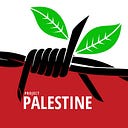Life under Israeli Military Occupation: A way paved with hurdles
By Isra Ghourani. The Jordan Valley, occupied West Bank (WAFA)
Abu Saqr, an old man from Al-Hadidiya, a small village built mainly with shacks in the Jordan Valley region of the occupied West Bank, will have to look for an alternative road to reach his home, after Israeli occupation forces closed the main road to the village with a metal bar.
Abu Saqr says even the main the road to the village, which was shut down yesterday, had been used as an alternative road following Israel’s closure of the former main road to the village about a month ago. The former road, Abu Saqr says, had been sealed by Israeli forces with earth mounds and cement cubes.
“The original main road to the village is the property of the local population, and is part of the structural zoning of the village,” Abu Saqr remarked.
“Harassment [by Israeli forces] of the people of Al-Hadidiya started with the establishment of Ro’i settlement 30 years ago. At that time, the Israelis closed the main road to the village in order to clamp down on the population and sap their livelihoods,” the old man told WAFA correspondent.
In recent years, the original road to the hamlet was vandalized with bulldozers many times by Israeli forces. The last one was one month ago, when the road was shut down with earth mounds making access to the village through that road impossible. Ever since, residents started to use the unpaved, agricultural road which was sealed yesterday again by the occupation forces.
The village is inhabited by some 90 Bedouin herders relying heavily on livestock raising as the main source of livelihood. Abu Saqr estimates that there are 4,000 sheep raised for milk or beef in the village.
According to Israeli human rights group B’Tselem, Al-Hadidiya is not connected to the water grid and its average water consumption is twenty liters per person per day — far less than the 100 liters per person per day recommended by the World Health Organization.
“The village is cut off from any regular water supply despite its proximity to a Mekorot (Israeli national water company) pump (Beqa’ot 2), which provides water to the nearby settlements of Ro’i and Beqa’ot. The per diem water allotment per person in these settlements, for household use alone, is over 460 liters — at least 23 times the consumption of water in al-Hadidiyah,” says the group.
“Before the Israeli occupation of the West Bank, residents of al-Hadidiyah lived a few kilometers east of the village’s current location, but the site was declared a firing zone and the residents were ordered to vacate it in 1997,” B’Tselem adds.
Palestinian civilians and Bedouin herders in the Jordan Valley region, which makes up one third of the occupied West Bank, are frequently harassed by Jewish-Israeli settlers who wish to take over the entire area and empty it of its Palestinian population.
Israel also refuses to permit virtually any Palestinian construction in the Jordan Valley, forcing residents to build without a permit to provide shelters for their families.
Besides undergoing temporary displacement, the Palestinian families living there face a myriad restrictions on access to resources and services, with Israel exploiting the resources of the area and generating profits by allocating generous tracts of land and water resources for the benefit of Jewish-Israeli settlers.
